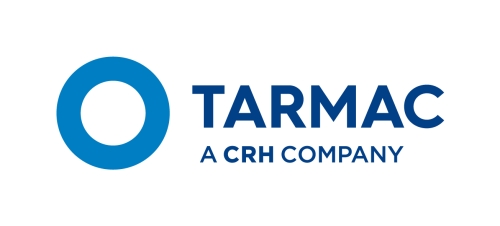Asphalt on pole position at Silverstone
Richard Vine, regional director – Contracting Central
In a major collaborative project this year we successfully resurfaced Silverstone’s world-famous racing circuit for the 2019 GoPro British Grand Prix MotoGP™ and British F1 Grand Prix. We used innovative technology to help optimise the construction process and ensure the surface was laid correctly first time. We had a matter of weeks to lay a highly durable new track in time for the 2019 GoPro British Grand Prix MotoGP™ and British F1 Grand Prix.
Quality aggregatesBayston Hill’s material was selected due to its high Polished Stone Value (PSV). The quarry is no stranger to racetracks – we resurfaced Donington and Bahrain’s F1 circuit with Bayston Hill material. The asphalt mix had to meet even stricter standards than our airfield projects, which are already incredibly challenging. Quality and consistency meant everything to our customer. So we opted to wash all the aggregates at our Dolyhir plant before moving them on for mixing. Dan Sylvester, site manager at Dolyhir, said: “We needed to remove some of the dust and make the aggregate as consistent as possible to meet strict specifications.
Manufacturing ControlThe washed aggregates were then transported to Elstow and Harper Lane asphalt plants. Every part of the manufacturing process had to be tightly controlled. Dayle Gray from the batch cabin at Harper Lane commented: “Mixing the three components of aggregate, filler and bitumen was very challenging. The material had to be consistent in grading, as well as temperature, to ensure a smooth finish when the track was laid, which took high levels of concentration and focus.”
Precision preparationBefore we could lay the new surface, Silverstone’s existing track had to be removed. Our specialist milling team operated National Road Planning (NRP) machines 24 hours a day for four days to get the job done. For the very first time in the UK, a laser-scanning system was used to create a 3D model, used by the GPS-controlled planers to shape the track and to help eliminate any bumps and optimise the profile of the track at every section. We produced no more than 2.5 mm deviation on the whole of the track.
Choreographed ResurfacingNow we were ready to carefully choreograph the resurfacing programme – and the heat was on! We had to transfer the hot asphalt mix that was produced at a temperature of more than 165°C – and it had to go from being made to laid in less than three hours. Jeremy Hooper led logistics at Silverstone. It was his team’s job to manage production units and transport from 6am to 8pm every day. Their hard work and dedication made it possible to supply our surfacing team with 360 tonnes of asphalt every hour.
Advanced paving solutionsOur contracting team worked closely with suppliers who had the most experience operating the required high-tech paving machines, there were used in a staggered ‘V formation’ echelon. This helped deliver a seamless consistency of surface and texture across the full width of the track. The team used only the latest, state-of-the-art equipment sourcing it from as far afield as the Czech Republic, to ensure the quality of the final surface was second-to-none.
Major innovation used at Silverstone
- 3D smooth ride top con scanning technology was used on two new Wirtgen W 210 Fi planing machines. This helped improve circuit gradients and drainage – and eliminate surface bumps. An on-site laboratory allowed us to continually test the quality of our materials, even as the track was being laid.
- BPO logistics software gave us a digital record of the material’s journey and meant we could slow down or speed up production as needed.
- Four 13-metre averaging beams were used with the two leading paving machines, ensuring that the paving was done to give a perfect finish to the racing-quality track.
- Three Wirtgen feeder machines ensured the smooth transition of material from our delivery wagons to the pavers, allowing non-stop paving and a joint-free, seamless track.
Project legacyWhat we’ve learned on Silverstone is only the start, as Richard Vine, regional director – Contracting Central, explained: “Noise and ride quality are increasingly important for customers such as Highways England and local authorities. Many of the technologies and techniques we used at Silverstone could offer practical solutions and improvements in the way major road projects are carried out in the future. The Silverstone scheme allowed us to show that we can deliver high-level solutions. It’s essential that we’re now at the forefront of driving this technology through.”

